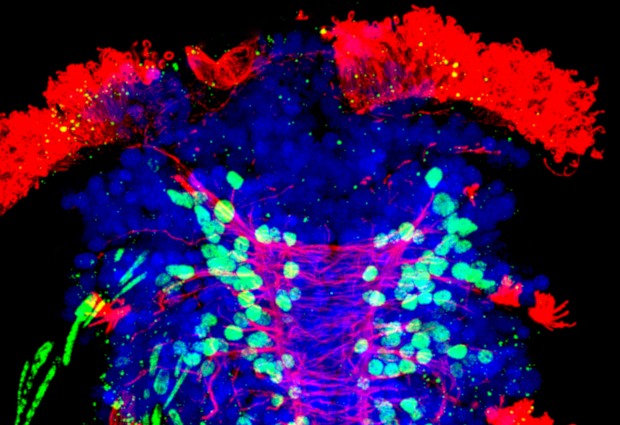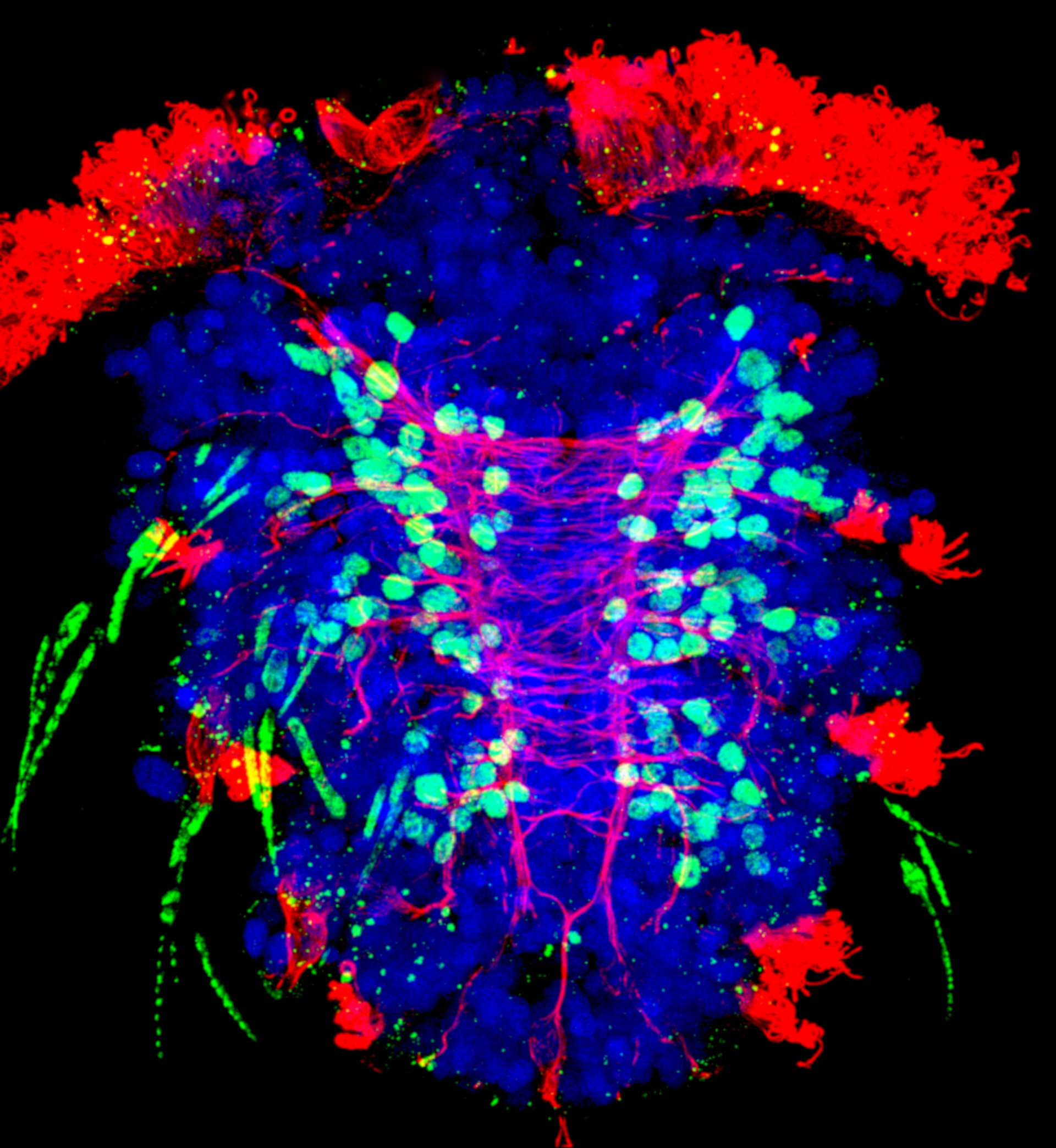
Read the latest Issue

Is it a fungus or a strange plant? Actually it’s the larval form of Platynereis – a group of marine ringed worms. Scientists have been using them in their studies for the past 70 years, and they are among the preferred lab organisms. They are easy to keep in the lab, and under temperature and light conditions emulating a never-ending summer, scientists can breed them at any time.
The worms generate thousands of synchronised developing larvae. This is convenient for genome-wide studies and the generation of gene expression atlases. They have also kept many ancestral features, which makes them ideal for evolutionary comparisons.
In addition, Platynereis are transparent, making them a perfect imaging model. This particular individual was not only modelling for science but also for the camera. The image shows the trunk of the worm, with blue colours showing nuclei, red showing axonal projections and light-green showing nuclear protein. The green hair-like structures are called chaetae and are auto-fluorescent. The worms use them for locomotion.

If you have a stunning picture of your science, your lab or your site, you can submit it here.
Looking for past print editions of EMBLetc.? Browse our archive, going back 20 years.
EMBLetc. archive